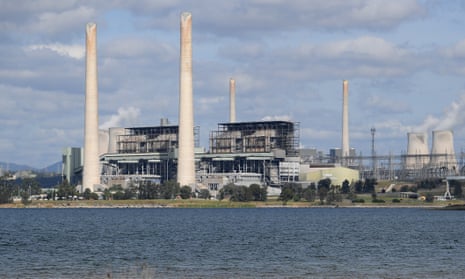New South Wales’s environmental watchdog has released what it calls Australia’s “most comprehensive plan” to regulate carbon emissions, requiring firms to show how they will hit net zero by 2050 and nudging them to improve resilience in a warming world.
The Climate Change Policy and Action Plan 2023-26, released on Friday by the Environment Protection Authority, will identify what progress is already under way by companies now covered by pollution licences and encourage them to improve.
Licensees will be given a mandatory survey to show how they are contributing to the NSW government’s climate change objectives, including cutting 2005-level emissions by 70% by 2035.
Firms will have to prepare and develop their own climate change mitigation and adaptation plans (CCMAPs), and report their progress over time, including on company websites. Advisory groups will develop targets for each industry sector.
Tony Chappel, the EPA’s CEO, said this plan “means for the first time in Australia, there will be a comprehensive approach around emissions reduction pathways”.
Sectoral targets would not initially be binding “because there is a huge variety of what is and is not cost-effective abatement”, Chappel said. “We don’t want to have a simple one size fits all approach.”
Sign up for Guardian Australia’s free morning and afternoon email newsletters for your daily news roundup
NSW’s approach was triggered by a case brought before the state’s land and environment court in 2021 by the Bushfire Survivors for Climate Action (BSCA). They argued the EPA had a duty under the Protection of the Environment Administration Act 1991 to develop objectives, guidelines and policies to ensure environmental protection from climate change.
They won the case and Matt Kean, then the environment minister and now treasurer, opted not to appeal.
The survivors group and the NSW Environmental Defenders Office both welcomed the action plan as “groundbreaking” but also as a first step with more to do.
“As a result of that case, the NSW EPA is now an environmental regulator with teeth,” said Fiona Lee of the BSCA, who lost her home in the black summer bushfires of 2019-20.
“We will work constructively with the EPA to see the plan strengthened at the next annual review,” Lee said. “For example, the rollout of legally enforceable emissions reduction targets should occur faster than is required under the current plan.”
The EDO’s Elaine Johnson called on other states to follow NSW.
“It is absolutely the responsibility and duty of all EPAs to ensure protection from climate change for all Australians,” Johnson said. “That means dramatically cutting emissions and ensuring a rapid and just transition away from fossil fuels.”
after newsletter promotion
Chappel said several states, including Victoria, had been in discussions about the NSW plan. It was also designed to complement the Albanese government’s revised safeguard mechanism which aims to lower emissions from the 215 largest pollution industrial facilities in the country.
NSW’s emissions in 2018-19 totalled 136.6m tonnes of CO2-equivalent, 17% lower than in 2005.
For now the plan will not extend beyond licence holders in the state but the EPA will consider extending it to other polluters if there are signs that actions set an uneven playing field or incentivise less sustainable practices, Chappel said.
There is no intention to apply the action to sectors the EPA does not currently regulate, such as local bakeries, he said.
Chappel said the shift to net zero offers new business opportunities “right across the board”, from regenerative agriculture and hydrogen, to renewable energy and metals made without fossil fuels.
The EPA will also be asking licensees to consider how they might increase the resilience of their operations to extreme weather, such as flooding and intense rainfall.
The working groups set up for each sector will also be aiming to identify best practice approaches that can inform actions by others, Chappel said.
